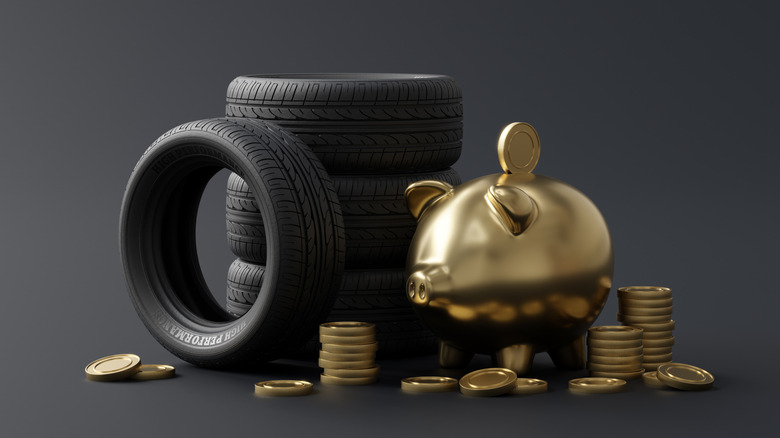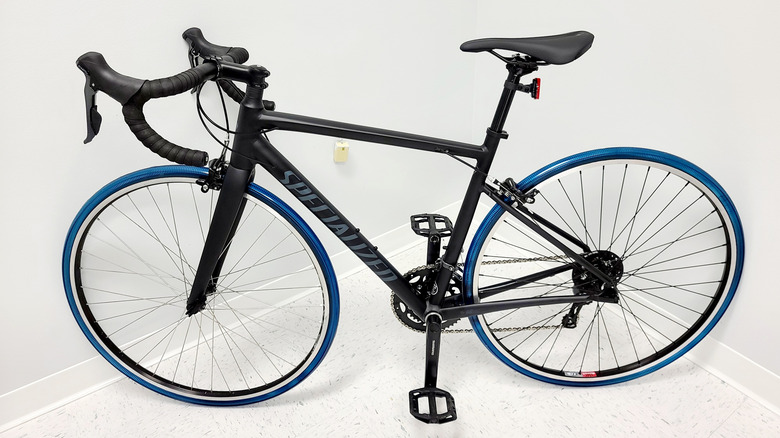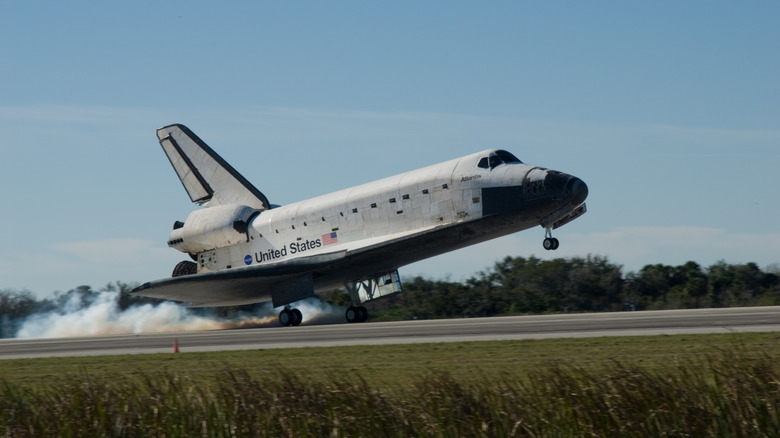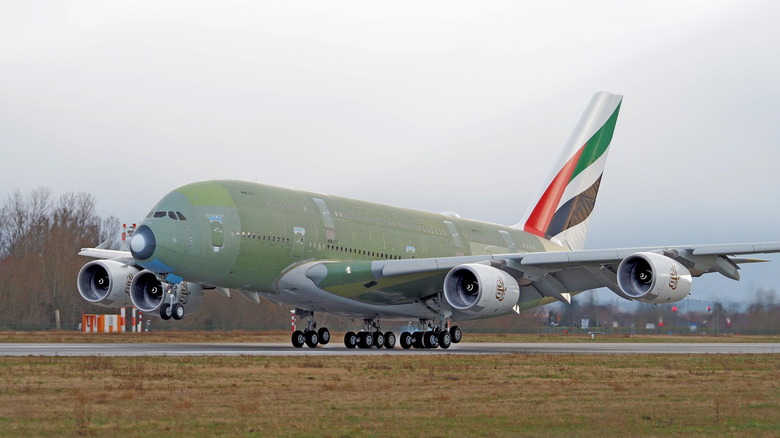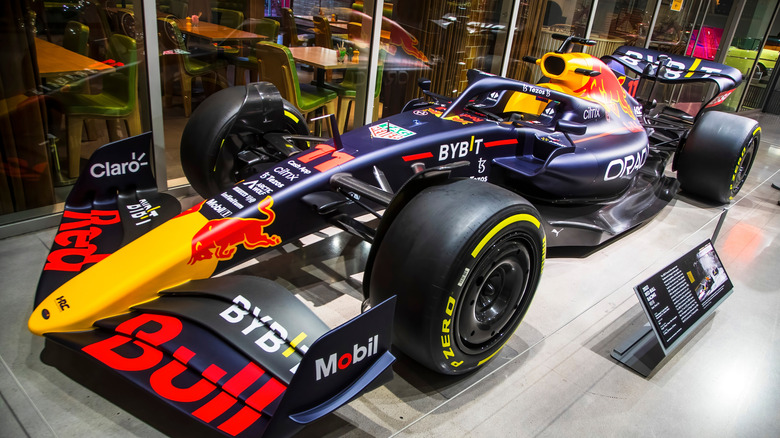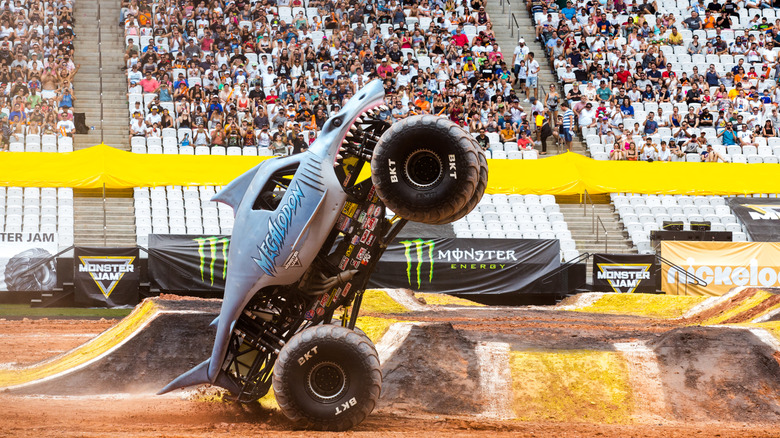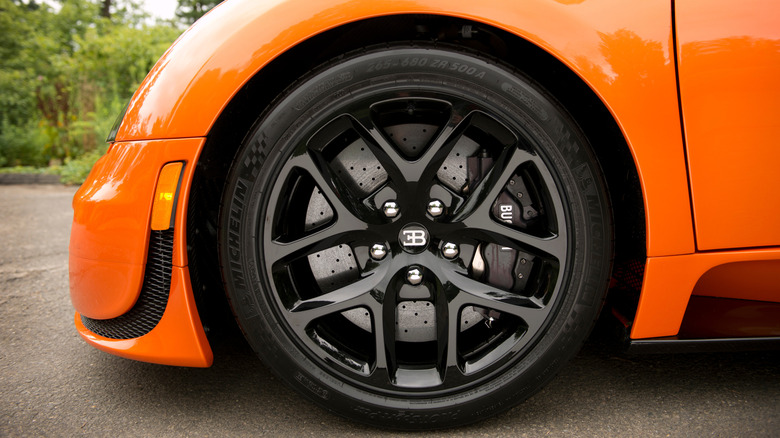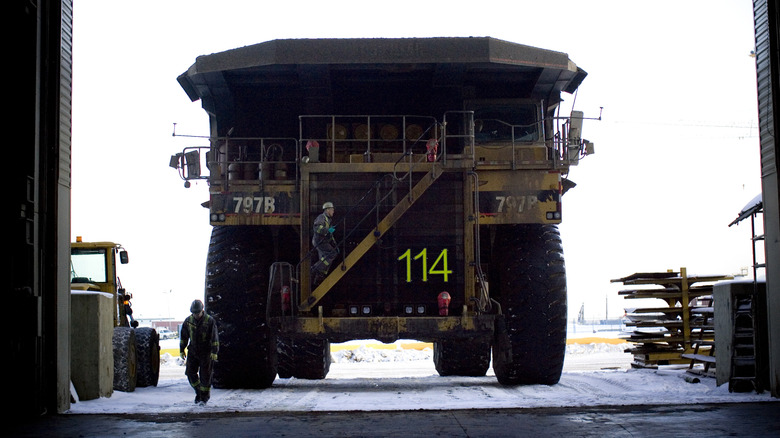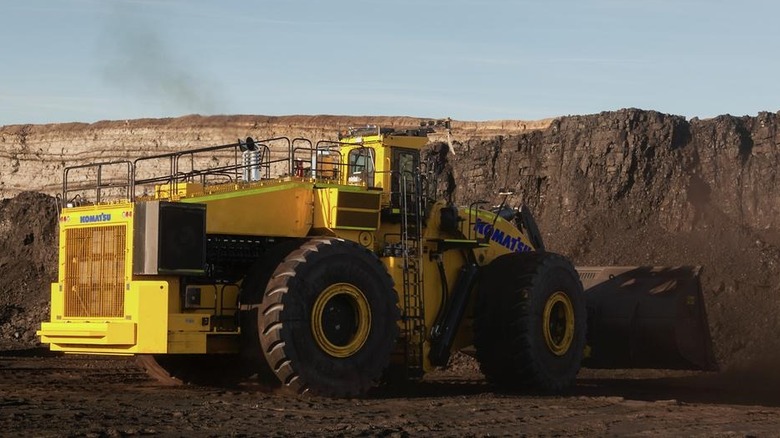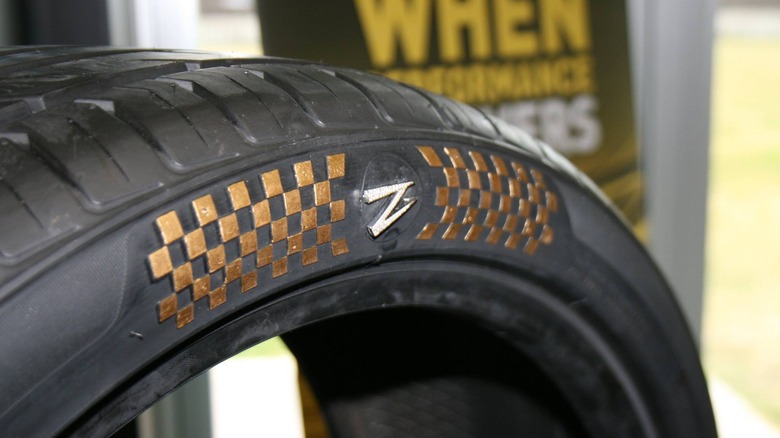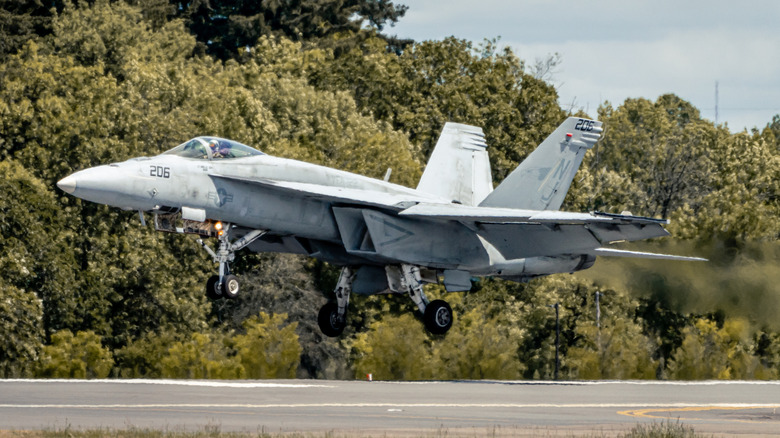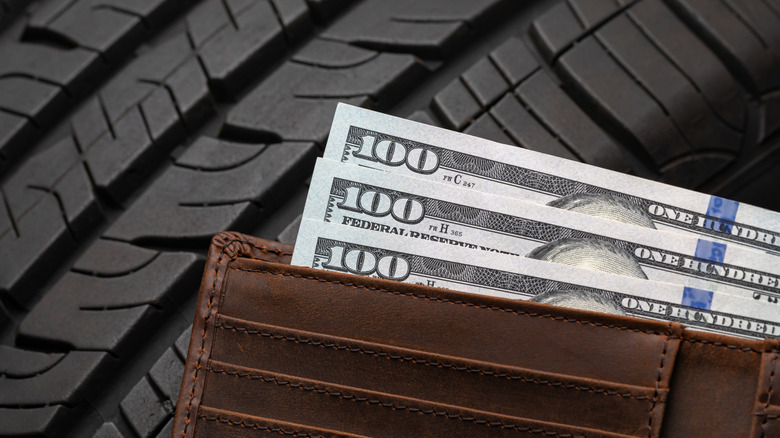10 Of The Most Expensive Tires In The World
So, you just emptied your wallet for those Michelin Pilot Sport 4S tires at $250 a pop, or went full track rat with Hoosier TrackAttack Pro 200TWs. In return, you get fancy tread patterns, flawless performance, and, if you're lucky, a few approving nods at Cars and Coffee. Sure, the bill made you wince, but hey, good tires are worth it, right?
Here's the reality check: a "splurge" like that barely registers in the world of truly extreme tires. We're talking about rubber that's been to space and back, literally. Tires so massive, they could roll over your entire Miata without a second glance. And then there's the absurdly opulent rolling flexes, slathered in 24-karat gold and dripping with diamonds, because why not?
Your tires? Respectable. These tires? Utterly ridiculous. While your tires worry about speed and treadwear ratings, these laugh at 3000 degrees Fahrenheit temperatures and carrier deck landings. Some solve impossible engineering challenges. Others exist purely to separate the ultra-wealthy from their millions. Either way, after this tour of rubber royalty, that painful credit card statement from your local tire shop might suddenly seem downright reasonable. (You're welcome.)
Cycling's cosmic revolution
What do you get when you mix NASA tech with your weekend ride? Airless bike tires tough enough for Mars, yet flashy enough for Earth. The Smart Tire Company's Kickstarter promised just that: NiTinol+ tires made from a shape-memory alloy that bends like rubber but bounces back like titanium — perfect for potholes, gravel, and whatever adventures you can cook up.
Backers had a few options. If you wanted to keep it simple, a $250 pledge got you two Smart tires (no rims, easy DIY install required). But if you wanted the full cosmic flex, you could grab a pre-assembled package: $1,300 for an aluminum setup or $2,300 for carbon fiber rims, colorful ORBT re-treadable treads, and the quiet satisfaction of owning something designed with Mars in mind. And if you really wanted to go interstellar? A $10,000 pledge got you a golden ticket: A private virtual tour of the Smart Innovation Lab in Ohio, complete with behind-the-scenes access to the company's NASA projects and enough aerospace buzzwords to make your head spin.
Unfortunately, those tires are still somewhere in orbit. While early supporters wait for delivery day, Smart Tire's been perfecting its design and hunting down exotic metals pure enough to star in a sci-fi movie. Reinventing the wheel, it turns out, isn't exactly an overnight job. The final tires are shaping up to be lighter, stronger, and longer-lasting than anyone expected, but your patience might wear out before your old treads do.
Engineered for re-entry
Space shuttle tires might look like something you'd slap on a heavy-duty truck, but their price tag tells a very different story. Each space shuttle tire costs $5,560. And if you think that meant years of service, think again. Most of these tires are one-and-done, built to survive a single brutal landing from orbit. No second chances. Just one glorious moment of truth. They're worth every cent, too.
Each tire has to handle the impact of a 150,000-pound spacecraft slamming into the runway at up to 260 mph. And that's after re-entering Earth's atmosphere and transitioning from -40-degree Fahrenheit space temperatures to 130-degree Fahrenheit runway heat in a matter of minutes. Not exactly an easy life for a piece of rubber.
The NASA Shuttle's six-tire setup includes four main gear tires that take the brunt of the abuse, and two nose tires that occasionally squeaked by for a second landing if the universe feels generous. Even with that tiny discount, each mission still burned through $27,800 worth of rubber. And NASA couldn't just Amazon Prime these when they ran low. Each replacement tire took several months to arrive, turning logistics into a high-stakes game of chess where every pawn cost as much as a used Honda.
Unsung heroes of air travel
Designed for punishing forces, top speeds, and no room for error, widebody aircraft tires come with a cost that's just as intense. A single tire for a big plane like the Airbus A380 or Boeing 747 costs up to $5,500 apiece. Adding to the madness, while your car gets by with four tires, these giants need a whole squad just to land.
As the world's largest passenger plane, the Airbus A380 rides on 22 tires, costing airlines roughly $121,000 just to park it on the tarmac. The Boeing 747 isn't far behind, rolling on 18 tires, which rings up to about $99,000 if you need a full set. And for all that money? You get about 200 to 400 landings before it's time to retire them. Nose gear tires wear out even faster, thanks to the extra abuse they take with each landing.
To help manage the cost, airlines lease their tires from big names like Michelin, Goodyear, and Bridgestone. It's basically a pay-per-landing plan, which gives tire makers a good reason to build them tough. Early wear means more replacements and less profit. Worn tires get sent back for retreading, sometimes up to seven times, saving serious money. But still, when you're hauling around 38 tons of airplane, the tire bill adds up faster than your frequent flyer miles.
Speed at a premium
The next time you see F1 pit crews going wild with the tire changes, remember they're not just stretching their legs. They're fitting the cars with some of the slickest, stickiest, and fastest-wearing tires in motorsport. F1's famously treadless tires are made for pure speed, and a fresh set costs about $2,700. Over a Grand Prix weekend, the numbers accelerate faster than a Red Bull on the straights.
Each driver goes through about 13 sets, racking up a tire tab of $35,000 before the checkered flag even waves. Multiply that by two drivers per team, and it's $70,000 in rubber every single race. Over a full season, tire costs can soar past $1.6 million for each team. Talk about a costly need for speed. But race teams don't have to foot this massive tire bill directly. Instead, they pay a flat fee for the season.
All tires come courtesy of Pirelli, under a deal with the FIA (the big boss of F1). Why? Because when cars get too quick, it's easier to make tires less grippy than to convince teams to build slower cars. The truly brilliant part? Pirelli won the contract by promising to make tires that deteriorate faster than ice cream on asphalt. These $2,700 rubber donuts were designed to fall apart, creating the pit stop drama that keeps viewers from switching to golf. Imagine paying luxury car prices for tires specifically engineered to not last. That's F1 for you.
Crushing the competition
Monster trucks might be famous for crushing cars, but they flatten tire budgets, too. Each tire spinning on the most epic monster trucks of all time costs about $3,000. Despite all that cash, these extreme performers have the lifespan of a mayfly compared to your commuter tires, which can soldier on for 50,000 miles with proper rotation and alignment. Even the best monster truck tires last only three or four shows before needing replacement. Most teams burn through about eight tires per year, spending around $24,000 annually just to keep their trucks battle-ready. And that's before you count any spares for a bad landing or an extra rowdy freestyle run.
What makes these tires cost so dang much? For starters, they're absolute beasts, standing up to 66 inches tall, over 40 inches wide, and weighing around 800 to 900 pounds each. That's nearly half a ton of rubber per tire. Plus, these tires are hand-sculpted works of art, with fancy bias-ply construction made for yeeting through the air and landing on a pile of sacrificial Chevy Celebrities. In a sport where one wrong landing can end a run (or flip a truck onto its roof), it's no wonder teams invest heavily in their rubber. Monster truck tires are a key part of the show, and they carry the scars to prove it.
Pure luxury at high speed
Think your performance tires were expensive? The Bugatti Veyron laughs in quad-turbocharged W16. When you're building a car that can hit 268 mph without taking flight, ordinary rubber simply won't do. That's why the legendary Veyron rolls on Michelin Pilot Sport Pax tires that cost a jaw-dropping $42,000 per set. Yes, you read that correctly. These tires cost more than many brand-new cars.
What magical properties could possibly justify spending that much on tires? They're bespoke rubber masterpieces, built to survive the brutal forces created by a car that's practically ripping a hole through the air. At top speed, the tires fight against 5,442 Gs of force, so much pressure that they're only rated to survive 15 minutes at full tilt before needing replacement.
Even more extreme, the tires are actually glued to the wheels to prevent them from slipping under that insane load. And the adhesive needs refreshing every 18 months, whether you've driven the car or kept it as a garage queen. It gets better (or worse, if you're footing the bill): After about three tire changes, Bugatti recommends replacing the wheels themselves. That means new rims, new tires, and another mountain of cash gone — just part of the Veyron's wild maintenance bills, like $25,000 for fluid changes and $42,000 to replace the fuel tank.
A mining behemoth's rubber shoes
When you're hauling nearly 400 tons of rock, dirt, and dreams, nothing about the price tag is going to be small, including the tires. The Caterpillar 797B mining truck rolls on Michelin 59/80R63 monsters, each standing a whopping 13 feet tall and weighing in at over 11,000 pounds combined. How much for these rolling giants? Could you believe it's up to $59,000 per tire? And the 797B doesn't just need four like your average pickup truck. It needs six — two up front, four in the back — totaling about $354,000 just in rubber to get fully outfitted for a day's work. But the price isn't just about size.
These tires are built to take punishment that would destroy regular tires in seconds. They chew through jagged rocks, plow through knee-deep mud, and handle speeds up to 42 mph while carrying more weight than a fully loaded 747. The secret? Special heat-resistant rubber, ultra-tough construction, and engineering that could probably survive a nuclear blast.
What softens the sting for mining companies? Michelin promises these tires can carry 10% more weight yet still last longer than older models. And when your truck costs up to $5 million and gulps fuel faster than a private jet on a bender, squeezing every extra ton of payload out of every trip means more profit, period.
Firestone's biggest flex
When the world's largest front-end loader needed shoes, the Firestone Tire and Rubber Company invented a whole new level of rubber. Meet the heavyweight champion of the tire world: The Firestone 70/70-57 Super Rock Grip. Originally made for the LeTourneau L-2350 (now the Komatsu WE2350), these tires are every bit as extreme as the machine they carry, as is their price. Each tire costs over $120,000, with four needed per loader. Do the math, and you're looking at almost half a million dollars just in rubber.
You do get a lot for the money, though. Each of these massive tires tower at 13 feet tall, stretch 6 feet wide, and tips the scales at about 15,000 pounds. They're stitched together with 48 thick plies of rubber and 640 pounds of steel wire. Beyond that, the creation of each tire is practically performance art. A team of 40 workers spends 88 hours building just one, blending high-tech machinery with old-school handcrafting. The result? A rubber masterpiece that can support a quarter-million-pound loader while it scoops up 80-ton bites of earth.
Even transporting these monsters is an event worthy of a reality show. When Pete's Tire Barns acquired just one for display, it needed cranes, special permits across multiple states, and probably a motivational speech for the truck driver. Now, just imagine needing four of them and footing a tire bill bigger than some startup budgets.
When tires go full bling
Just when it seemed like tire prices couldn't get any crazier, along came Z Tyre to prove otherwise. In 2016, the Dubai-based company unleashed the world's most expensive set of car tires — a $600,000 masterpiece that earned a spot in the Guinness Book of World Records.
Starting with its high-performance Z1 tires, Z Tyre sent them off on a global luxury tour. First stop: Italy, where artisan jewelers decked them out with specially selected diamonds set in 3D-printed white gold. Then it was off to Abu Dhabi, where the same craftsmen working on the new royal palace gilded them in 24-karat gold leaf. Finally, the tires returned to Dubai to be sold to a private buyer, with all profits donated to charity.
Sure, they're technically tires. But they're also a rolling flex of gold, diamonds, and unapologetic extravagance. Think of them as the tire world's answer to a diamond-studded smartphone: completely over the top, yet somehow still irresistible. Because if you're going to burn rubber, why not burn gold-plated, diamond-encrusted rubber?
Built for landing at 150 knots
Landing an F/A-18 Super Hornet on a moving carrier is less "smooth touchdown" and more "brace for impact." The wheels and tires take the worst of it, pulling hero duty until they inevitably break. It's no surprise, then, that the Navy doesn't bother with simple tire changes. When a Super Hornet lands hard enough to warp its wheels (a pretty regular thing), maintenance teams replace the entire wheel and tire assembly. Price tag? A cool $100,000 per unit.
With 166 replacements needed annually, a Navy's fighter jet footwear budget hits $16.6 million. That's enough to buy several Lamborghinis, all spent on keeping the Hornets from doing horrifying belly flops into the Pacific. The plot twist? Those discarded wheels aren't actually trash, just slightly misshapen from absorbing impacts that would flatten your car like a pancake. Fortunately, there's a solution on the horizon.
Thanks to new cold spray 3D printing tech, the Navy doesn't have to junk expensive Super Hornet rims anymore. Instead, it can fix them up for just $300 a pop. The best part? The repaired wheels are just as strong as brand-new ones, saving 99.7% of the cost without sacrificing an ounce of performance. According to early reports, up to 80% of rims could be salvaged with this method, turning what used to be a $16.6 million problem into a bill barely topping $50,000 a year.
Who knew tires could cost that much?
The next time your tire bill makes your wallet cry a little, just think: Hey, at least you don't need a NASA squad to bolt them on. Plus, you're probably not single-handedly keeping a diamond mine in business with every mile. And the best part? You can leave your car parked without some goon trying to scrape off the sidewalls for scrap gold.
Extreme tires live in a world of their own — a place where practicality taps out and sheer flex takes the wheel. Whether they're built to survive re-entry speeds or just win a Guinness World Record for being the world's most expensive rolling jewelry, they're proof that somewhere, somehow, there's always someone ready to one-up the impossible.
Meanwhile, back here on Earth, good old-fashioned grip, durability, and maybe a little street cred at Cars and Coffee still go a long way. So go ahead, treat yourself to that ultra-sticky set of summer tires. Compared to the madness you've just seen, you're making an incredibly responsible financial decision.
